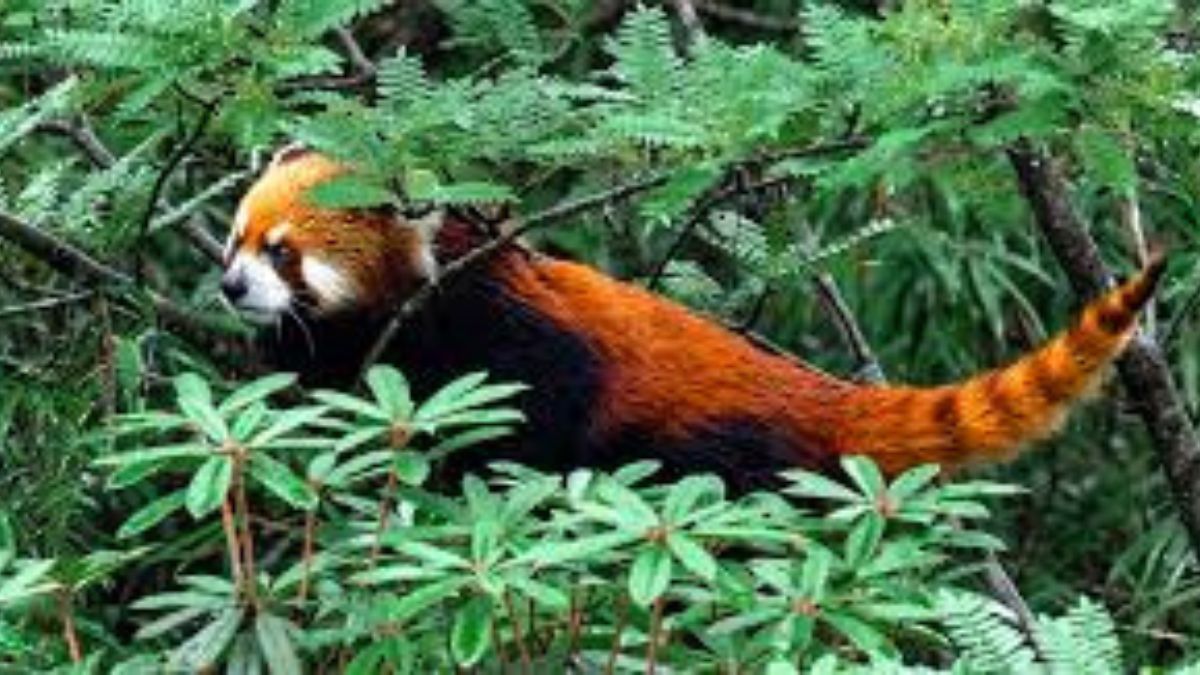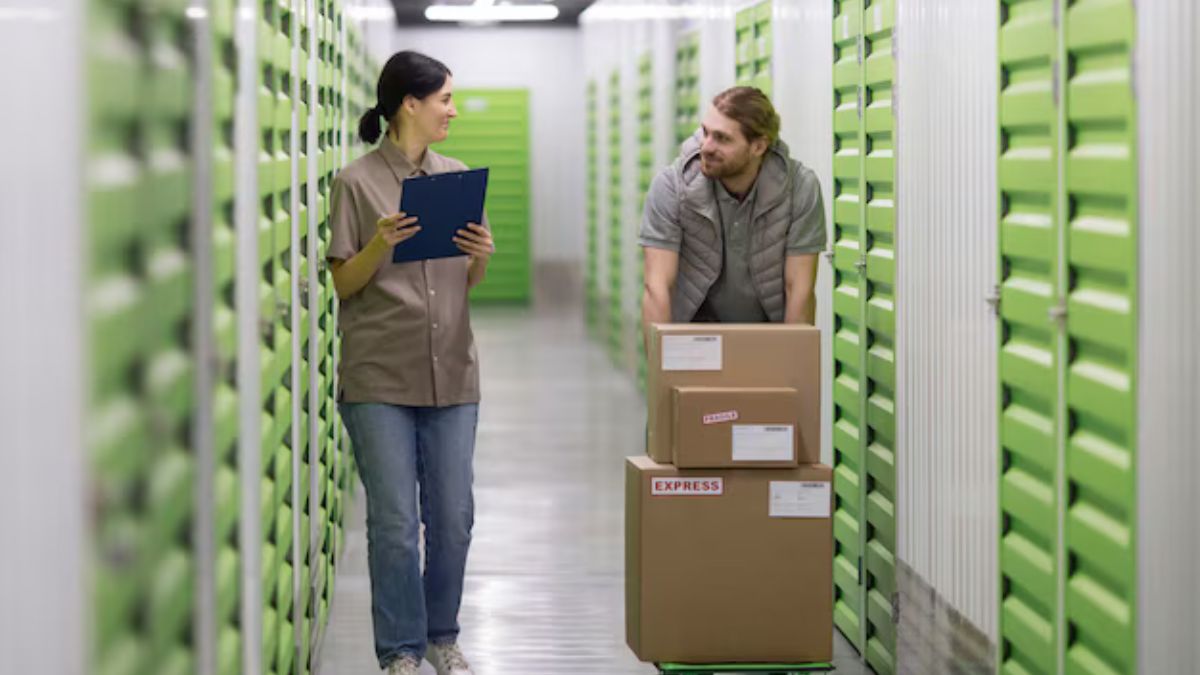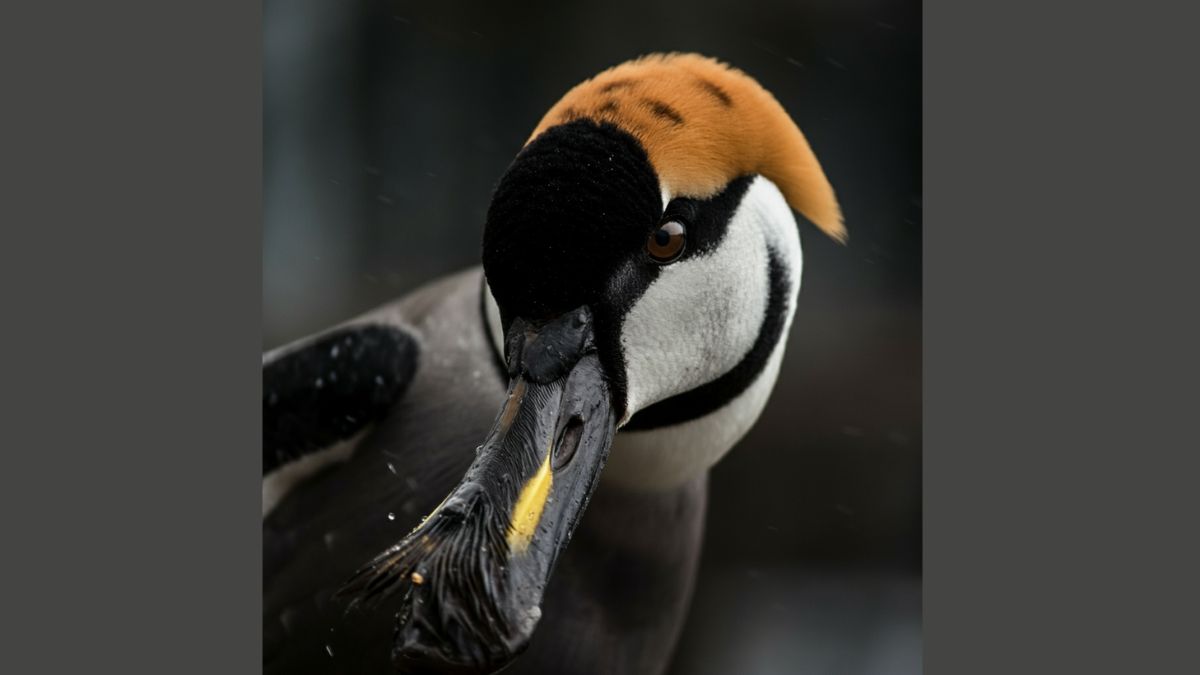BLOG
Understanding and Protecting Animal Habitats

The preservation of animal habitats is a crucial aspect of conserving biodiversity and maintaining the delicate balance of ecosystems. However, the rapid pace of urbanization, deforestation, and climate change has placed many natural habitats in jeopardy. Without proactive measures, we risk losing not only countless species but also the benefits these ecosystems provide to humans, such as clean air, water, and food.
This blog will explore what animal habitats are, why they matter, the threats they face, and actionable steps we can take to protect them. Whether you’re a passionate environmentalist or simply curious about the world around you, understanding more about animal habitats is a vital step toward protecting our planet’s rich diversity of life.
What Are Animal Habitats?
At its core, a habitat is the natural environment where an animal lives, reproduces, and thrives. These Animal habitats come in many forms, including forests, deserts, wetlands, oceans, grasslands, and even urban areas. Every species is uniquely adapted to its habitat, relying on its specific conditions—such as temperature, food availability, and shelter—for survival.
For example, the polar bear is tailored to life in the Arctic, relying on sea ice for hunting seals, while a tropical toucan thrives in rainforests, where fruit and insects are abundant. Even small disruptions to these environments can have catastrophic implications for the species that inhabit them.
Types of Animal Habitats
Here are the primary types of Animal habitats and examples of the species that depend on them:
- Forests (e.g., rainforests, temperate forests): Home to animals like jaguars, orangutans, and woodpeckers.
- Grasslands (e.g., savannas, prairies): Host to lions, bison, prairie dogs, and numerous bird species.
- Wetlands (e.g., marshes, mangroves): Provide shelter to species like alligators, frogs, and wetland birds like herons.
- Oceans (e.g., coral reefs, deep seas): Vital for whales, sharks, octopuses, and countless fish species.
- Deserts (e.g., Sahara, Mojave): Support animals like camels, lizards, and scorpions.
Each of these Animal habitats plays a unique role in maintaining ecological balance and supports a variety of life forms.
Why Are Animal Habitats Important?
The health of animal habitats is directly tied to the overall health of the planet. Here’s why they matter:
1. Support Biodiversity
Animal habitats support a wide range of species. This biodiversity ensures ecosystems are resilient to changes and can continue providing essential resources like pollination, water purification, and soil fertility.
2. Regulate Climate
Forests, wetlands, and oceans act as carbon sinks, absorbing vast amounts of CO2 and helping regulate global temperaturesDiscover why animal habitats are vital for biodiversity, common threats they face, and practical steps you can take to protect them. Learn more here!. Protecting these habitats means safeguarding our planet from the worst effects of climate change.
3. Provide Essential Resources
From food to medicine, our resources often come from natural ecosystems. For example, many life-saving drugs are derived from plants and microbes found in endangered habitats.
4. Cultural and Recreational Value
Animal habitats are often integral to the cultural and spiritual beliefs of communities and offer opportunities for eco-tourism, enhancing human connection with nature.
Major Threats to Animal Habitats
Despite their importance, animal habitats face mounting threats from human activity and natural changes.
1. Deforestation
Forests worldwide are being cleared for agriculture, logging, and infrastructure, displacing countless species and reducing carbon storage capacity.
2. Climate Change
Rising temperatures, melting ice caps, and ocean acidification are altering habitats at an alarming rate. For example, coral reefs are experiencing mass bleaching events due to warming seas.
3. Urbanization
Rapid urban development disrupts ecosystems by fragmenting habitats, making it difficult for animals to roam freely and reproduce.
4. Pollution
Plastic, industrial waste, and pesticides contaminate habitats, endangering wildlife and degrading the quality of their environments.
5. Illegal Wildlife Trade and Poaching
Unsustainable hunting and trafficking directly threaten species and ecosystems, tipping the balance toward extinction.
How Can We Protect Animal Habitats?
While the challenges are daunting, proactive steps can make a significant difference in preserving and protecting animal habitats. Here’s what individuals, communities, and governments can do.
1. Advocate for Protected Areas
Establishing national parks, wildlife sanctuaries, and marine reserves can protect large tracts of habitats from development and exploitation. These areas ensure ecosystems remain intact for future generations.
2. Support Sustainable Practices
Supporting sustainable agriculture, forestry, and fishing practices minimizes our environmental footprint. Buying products certified by organizations like the Rainforest Alliance or Marine Stewardship Council can make a real impact.
3. Restore Degraded Ecosystems
Reforestation campaigns, wetland restoration projects, and coral reef rehabilitation efforts help reclaim damaged habitats, allowing animals to thrive once again.
4. Combat Climate Change
Reducing carbon emissions through renewable energy adoption, energy efficiency, and reforestation projects is critical to mitigating climate impacts on habitats.
5. Educate and Raise Awareness
Promoting the importance of animal habitats, both locally and globally, increases public awareness and encourages action to conserve them.
6. Reduce, Reuse, Recycle
Waste reduction helps minimize pollution in natural habitats, protecting animals and their ecosystems. Eliminating single-use plastics and recycling effectively are simple steps everyone can take.
7. Support Conservation Organizations
Donating to or volunteering with conservation groups can directly contribute to efforts to preserve habitats and protect vulnerable species.
A Shared Responsibility
Every one of us has a role to play in protecting animal habitats. The interconnected nature of ecosystems means that the decline of one species or habitat can have far-reaching consequences for the planet as a whole. By understanding the importance of animal habitats and advocating for their preservation, we can ensure future generations inherit a planet as biologically rich as the one we enjoy today.
Start small—whether it’s planting native trees, reducing waste, or supporting eco-friendly businesses, every action matters. Together, we can create a more sustainable world for both humans and wildlife.
BLOG
Choosing the Best Storage Solutions for Your Unique Needs

Evaluating Your Storage Needs
Choosing the proper storage solution starts with comprehensively evaluating your specific needs. It’s crucial to understand that your requirements will vary significantly depending on whether you require a warehouse storage solution to manage bulk items or specialized storage for climate-sensitive goods, for businesses holding delicate items such as artwork, electronics, or pharmaceuticals, storage options such as https://warehousingit.com/capabilities/warehouse-storage/ that offer precise climate control are essential to maintaining the quality and integrity of the goods.
Additionally, businesses should consider mobile storage units if they operate in environments that require frequent relocations or have varying storage volume needs. Recognizing whether your inventory volume is prone to seasonal fluctuations or consistent growth is equally important. Dependable storage solutions meet your present needs and smoothly adapt to future changes.
Types Of Storage Solutions
Traditional warehouse storage is vital for medium to large retail, manufacturing, and distribution enterprises. It provides ample space and can be optimized with automated systems, reducing labor costs and enhancing efficiency.
Climate-controlled storage is essential for businesses handling sensitive items like pharmaceuticals, fresh produce, wine, and electronics. It ensures product integrity and meets quality assurance and regulatory standards.
Mobile storage units offer convenient, on-demand solutions for dynamic businesses. Delivered directly to a company’s premises, they are ideal for short-term storage needs, particularly in seasonal industries like landscaping or event hosting. They allow for flexibility without long-term commitments.
Understanding Space Requirements
Planning beyond current inventory must be balanced when determining adequate space for your storage needs. According to insights from SupplyChainDive, effective space management involves projecting not only present needs but also anticipating future growth, seasonal demand spikes, and fluctuations in inventory volume.
Addressing these factors in advance helps businesses design storage solutions that accommodate expansion seamlessly, effectively minimizing disruptions and additional costs associated with frequent relocations or expansions. Companies can optimize operational efficiency and economic resource allocation by strategically planning storage solutions.
Adaptability and Scalability
Storage solutions’ adaptability and scalability are paramount in today’s competitive and fast-paced business environment. Businesses should seek storage options that offer flexible contracts and expandable space provisions to support seamless growth or accommodate surprise volume fluctuations. As Logistics Management emphasizes, it is crucial for enterprises to prepare for growth by evaluating solutions that can be easily adjusted according to their evolving needs.
This flexibility is precious for startups and rapidly expanding companies that can quickly outpace their initial storage solutions. By choosing adaptable options, businesses ensure that their storage infrastructure remains aligned with organizational growth, facilitating long-term sustainability and operational success.
Storage Solution Security
Security must be a prominent consideration when choosing storage solutions, as the financial and operational implications of asset loss or damage are substantial. Facilities offering state-of-the-art security systems, such as 24/7 surveillance, biometric access control, and comprehensive insurance policies, should be prioritized to protect valuable inventory.
Ensuring the security of stored goods minimizes risk and guarantees peace of mind for business owners, allowing them to focus more critically on core business functions. Securing inventory is integral to maintaining business integrity and client trust, fostering a dependable reputation in the market.
Assessing Costs vs. Value
While cost efficiency remains a decisive factor in choosing storage solutions, it should not overshadow the value and benefits associated with each option. Ensuring that the selected facilities provide cost-effective services that align with budgetary constraints while not compromising quality, security, and operational efficiency is essential.
Sometimes opting for solutions with a slightly higher price point but supplemental features such as advanced security measures, climate control, or integrated inventory management systems can yield significant returns on investment by enhancing operational efficiency, minimizing loss, and ensuring regulatory compliance.
Benefits of Online Inventory Management
Integrating technology in storage solutions, mainly through online inventory management systems, offers transformative benefits for businesses. These advanced systems enable real-time tracking and management of inventory, providing comprehensive analytics that enhances decision-making processes and operational efficiency.
Such visibility and control over inventory turnover aid in optimizing stock levels, reducing the risk of overstock or stockouts, and better-facilitating coordination across various business divisions. Technology-enabled storage solutions improve customer satisfaction through increased accuracy and responsiveness when fulfilling orders.
BLOG
Unveiling the Mystique of Culaina Grosaina: A Journey Through Tradition and Innovation

The term “Culaina Grosaina” is one that evokes curiosity and intrigue. Rooted deeply in rich cultural traditions while evolving to meet modern tastes and lifestyles, it’s an extraordinary blend of history, craft, and innovation. But what exactly is Culaina Grosaina, and why does it hold such an enigmatic allure?
This blog takes you on a fascinating exploration of the world of Culaina Grosaina. We’ll uncover its origins, its cultural significance, and its transformation over time, all while offering insights into why it continues to captivate a global audience.
What Is Culaina Grosaina?
At its essence, Culaina Grosaina represents a synthesis of tradition and modern creativity. While its precise attributes can vary across regions, it typically denotes a specific practice or product (depending on the context) known for its exceptional craftsmanship, distinctive flavor profiles, or cultural resonance. The term is associated closely with a sense of authenticity—a reverence for the past brought to life in the present moment.
Whether it’s a culinary delicacy, an artisanal craft, or a ritual, Culaina Grosaina resonates because it maintains a delicate balance between honoring age-old practices and adapting to contemporary sensibilities.
Exploring Its Roots
Though the exact origins of Culaina Grosaina remain shrouded in mystery, most scholars trace its roots back centuries to small, tightly knit communities. These origins suggest that its value was tied not only to the materials or ingredients but also to the dedication and skill passed down through generations.
The early forms of Culaina Grosaina might have been simple—crafted from local resources and shaped by necessity. Over time, however, these humble beginnings evolved into a symbol of sophistication and mastery.
Why It Has Endured
At the heart of Culaina Grosaina’s longevity lies its ability to connect people. It brings individuals together, fosters shared experiences, and transcends borders. Today, it embodies a link between past and future—a living testament to heritage.
The Cultural Significance of Culaina Grosaina
Culaina Grosaina is more than a product or a practice; it’s a cultural icon. Across eras and societies, it has represented values such as excellence, patience, and creativity.
A Marker of Identity
For many communities, Culaina Grosaina plays a central role in shaping cultural identity. It reflects the character and history of its region, serving as a proud emblem of what makes that community unique.
Whether it’s showcased in festivals or celebrated at family gatherings, Culaina Grosaina often stands at the center of significant milestones and memories, fostering pride and unity.
A Global Phenomenon
While traditionally localized, Culaina Grosaina has found international recognition. Globalization has allowed its charm to reach audiences far beyond its origin, allowing others to appreciate its craftsmanship and meaning.
Still, its export is carefully controlled, as many creators aim to preserve its integrity and authenticity. The global demand has elevated its status, often placing it among the world’s most sought-after heritage treasures.
How Culaina Grosaina Has Evolved Over Time
Just as any tradition must adapt to survive, Culaina Grosaina has undergone transformations to remain relevant. While the essence stays true to its roots, modern interpretations have brought fresh innovations, appealing to contemporary tastes.
The Role of Modern Techniques
Where early creators relied solely on manual effort, modern technology now plays a key role in producing Culaina Grosaina. Precision tools can enhance certain aspects of its creation while reducing waste and preserving efficiency.
That said, the emotional craftsmanship remains central. Advanced tools may assist, but the heart and skill come from individuals dedicated to their craft.
Incorporating Modern Trends
From incorporating sustainable materials to featuring bold new flavors or designs, Culaina Grosaina embraces opportunities for reinvention. These modern touches not only keep longstanding practices alive but invite new generations into the tradition.
Instagram-worthy designs or eco-conscious ingredients, for example, coax younger consumers to take part in celebrating this iconic cultural treasure.
Why It Remains Popular Today
The appeal of Culaina Grosaina is multifaceted. For some, it’s a connection to simpler times. For others, it represents luxury and exclusivity.
A Haven from the Digital Age
Amid the rush of modern life, many turn to Culaina Grosaina as a means of slowing down and appreciating something tangible. Its emphasis on patience and quality resonates particularly in a world prone to immediacy.
An Eco-Conscious Choice
With increasing awareness of sustainability, Culaina Grosaina offers a model of respect for natural resources. Its focused, small-batch approach often emphasizes balance with the environment.
This “less is more” philosophy aligns perfectly with eco-conscious consumers looking for meaningful alternatives to mass production.
The Allure of the Artisan
At its core, Culaina Grosaina holds romantic ideals of a simpler life. Whether it’s hand-crafted artifacts or culinary delights prepared with care, it reflects a human touch and a narrative that inspire admiration.
Where to Discover Culaina Grosaina Today
If you’re ready to indulge in Culaina Grosaina, many regions offer exceptional opportunities to explore its wonders. Seek out local festivals, artisanal markets, or heritage tours for an authentic experience.
Alternatively, many creators and suppliers now operate online stores, giving you a convenient way to access this treasure from anywhere in the world.
Tips for Finding Authentic Culaina Grosaina
- Look for Certified Producers: Many communities have endorsements or certifications to guarantee authenticity.
- Engage with the Story: The more context you learn about the origins of a piece, the more appreciation you’ll gain.
- Support Small Makers: Often, the most remarkable Culaina Grosaina items come from small-scale artisans.
Why You Should Experience Culaina Grosaina
Trying Culaina Grosaina is more than just trying something new—it’s about celebrating the intersection of tradition and innovation, craftsmanship and creativity. It invites you to slow down, savor the moment, and connect with something truly special.
Whether you’re exploring it for its beauty, flavor, or symbolism, Culaina Grosaina is a powerful reminder that some of life’s greatest joys lie within the details.
BLOG
Amikaf16: A Comprehensive Guide

If you’ve been researching Amikaf16, chances are you’re curious about its purpose, applications, and why it’s gaining so much traction. Whether you’re a professional or simply exploring new advancements, this guide will walk you through everything you need to know about Amikaf16 — from what it is to how it can benefit you.
What is Amikaf16?
At its core, Amikaf16 is [Insert clear definition or description of Amikaf16 if available]. Its capabilities and unique features set it apart in its industry, making it indispensable for [target application or group].
Amikaf16 is primarily known for [list key characteristic or role], positioning itself as an innovative solution for [specific challenges/issues it solves].
Key Features of Amikaf16
Amikaf16 offers several standout features that solidify its importance in the field:
- [Feature 1] – [Brief explanation, including its functionality or why it’s important].
- [Feature 2] – [Discuss its benefits and applications].
- [Feature 3] – [Explain relevance to specific industry or use case].
Application Areas of Amikaf16
One of the reasons Amikaf16 continues to gain recognition is its vast array of applications. Some of the most prominent areas include:
[Application 1]
This is where Amikaf16 excels by providing [specific benefits]. For example, [insert any real-world case or theoretical use case].
[Application 2]
Amikaf16 has shown remarkable potential in [area] by [clear benefit], which makes it a game-changer for [specific users/organizations].
[Application 3]
From enhancing [focus or problem] to boosting [outcome or impact], Amikaf16 has proven to be revolutionary.
Why is Amikaf16 Important?
Innovation, reliability, and efficiency are just a few of the reasons why Amikaf16 stands out as a must-have tool/solution. Here’s a closer look at its impact:
1. Streamlined Functionality
Amikaf16 simplifies processes, saving time and effort for users. Unlike alternatives, it eliminates [common pain points], enabling better focus on [desired result].
2. Enhanced Performance
Through cutting-edge technology, Amikaf16 delivers results that are [faster/more precise/more effective] than conventional methods. Its ability to [specific capability] ensures unparalleled outcomes for [target audience/tasks].
3. Long-Term Cost Efficiency
Beyond initial usage, Amikaf16 reduces long-term costs by [brief explanation of how it saves money or adds value]. This makes it a cost-effective solution that aligns with evolving [industry demands/user needs].
Getting Started with Amikaf16
If you’re considering implementing Amikaf16 into your workflow or organization, here’s how to get started smoothly.
Step 1: Evaluate Your Needs
Determine how Amikaf16 aligns with your objectives. Whether you’re looking to [goal 1] or [goal 2], this evaluation will clarify how it fits your requirements.
Step 2: Set It Up
Amikaf16 typically involves [brief setup overview]. Ensure you follow [any prerequisites or insights] to maximize its usage.
Step 3: Harness Its Potential
Once operational, begin leveraging its features to tap into core benefits mentioned earlier. Over time, adjust [specific factors] to optimize performance and efficiency.
Step 4 (Optional): Seek Expert Support
If needed, consult professionals familiar with Amikaf16 to explore advanced features or troubleshoot issues.
Real-Life Testimonials and Success Stories
Users of Amikaf16 have reported notable success. Here’s what some of them are saying:
- “[Quote 1]” – [Person 1], [Position/Title]
- “[Quote 2]” – [Person 2], [Company/Organization]
- “[Quote 3]” – [Person 3], [Job/Field]
[Add anecdotal examples here for stronger connection to readers if necessary.]
Are There Any Challenges?
Although Amikaf16 offers immense benefits, it’s worth acknowledging potential challenges. These could include [examples of challenges], which could require [mitigation methods/advice]. However, most users find these factors manageable compared to the advantages it offers.
Final thoughts on Amikaf16
Amikaf16 is more than just [a tool]: it’s a powerful solution designed to drive results across industries. Its ability to [core capability] delivers value while addressing challenges unique to [target audience].
If you’re ready to see what Amikaf16 can do for you, it’s time to take action. Explore its full potential today and transform [area of focus]!
-

 BUSINESS9 months ago
BUSINESS9 months agoQuest for Success with QuestHRSC
-

 BUSINESS12 months ago
BUSINESS12 months agoJack Vonarb Private Equity Revolutionizing the Industry
-

 TRADING12 months ago
TRADING12 months agoThe Ultimate Guide to Mastering grossoptions.com
-

 HEALTH5 months ago
HEALTH5 months agoThe Future of Payments in the Medical Industry: Trends and Innovations
-

 GAME11 months ago
GAME11 months agoIncestflox and the Gaming Community’s Divide
-

 HEALTH2 months ago
HEALTH2 months agoAna Bolick SLP Hickory: Leading Pediatric Speech Therapy in North Carolina
-

 NEWS7 months ago
NEWS7 months agoIs Technology Redefining the Experience at nothing2hide.net news?
-

 BLOG11 months ago
BLOG11 months agoExploring the Concept of 200/6: What You Need to Know
